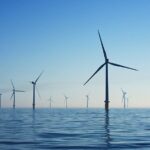A near year-long review of Dominion Energy Virginia’s plans to meet service obligations while abandoning fossil-fueled energy has ended with a pile of data, a list of unanswered questions, no real decision and plenty of reason to fear future electricity cost increases.
The review of Dominion’s Integrated Resource Plan (IRP) started March 9, 2020, and the State Corporation Commission issued a final order February 1: “The Commission, however, cannot conclude … that Dominion’s 2020 IRP, as filed, is reasonable and in the public interest for purposes of a planning document.”
Sometimes it seems the real purpose of utility regulation is to create massive billable hours for lawyers, engineers and economists and the total cost of this process must have been enormous. A side benefit is to totally confuse interested lay persons, leaving the general public absolutely in the dark, no pun intended.
The list of case documents takes six pages on the SCC’s website, including the 6-part initial Dominion filing, all the testimony from various participants, and transcripts from several days of hearings. All for a process that does not actually determine what energy projects get retired, which ones get built, and how we all pay for it. It is an interminable argument over a plan.
Which is why it hasn’t gotten much attention from Bacon’s Rebellion. Of more immediate importance is the 2021 rate review for Virginia’s largest monopoly electricity provider, which will involve many of the same players spending a similar amount of time and energy. It should begin in April and will decide if Dominion truly had excess earnings and what should be done about them. It looks back, where the IRP looks forward.
Peering into the future was complicated by passage of the 2020 Virginia Clean Economy Act (VCEA), which was just in final stages of approval as the IRP was filed. One conclusion that is clear in the final SCC order is that calling it the “Clean Energy We Don’t Actually Need Act” is a fair criticism.
As the SCC summarizes in its order, the VCEA requires Dominion to propose construction or purchase of 16,100 megawatts of solar and onshore wind generation, 5,200 megawatts of offshore wind generation, and 2,600 megawatts of energy storage. It also allows the utility to keep most of its natural gas plants and even one coal plant in operation until 2045 and even build new natural gas units.
That is more than Virginia will need, the SCC concluded. One plan produces “capacity in excess of projected load requirements of approximately 1,800 megawatts (“MW”) by 2027; 5,700 MW by 2035, and 7,400 MW by 2045.” That is based on the future load demand projected by the company.
But one of the largest disputes in the case, as always, was over the future energy demand forecasts used to justify such capital expansion. Environmental advocates challenged the IRP on that basis, also claiming Dominion underestimated the impact of efficiency programs on future demand.
The Sierra Club attacked a proposed 300-megawatt pumped storage facility as a bad investment. Another environmental group’s lawyer made a strong argument that the VCEA does not require the SCC to approve everything deemed “in the public interest” in the VCEA, even if Dominion wants to build it.
William Cleveland, counsel for Appalachian Voices, used his closing argument (here) to detail the exact wording of the final VCEA and a final drafting tweak intended to restore some SCC discretion. He asserted, as he has in other cases, that the traditional need to prove a project “reasonable and prudent” remains, despite legislative findings projects are “in the public interest.” The Office of Attorney General took the same stance.
The SCC gave credence to their arguments that in the various future options it outlined, Dominion really did not offer a lowest-possible cost plan that still met the VCEA’s targets. It never let its computer model seek out a least-cost approach, and the SCC ordered it to do so in the future.
But the SCC order stayed silent on that other key question: Did the final VCEA language preserve enough SCC discretion to allow it to say no to future wind, solar or storage proposals on the basis of cost, prudence or need? The one clear authority it has is to say no if a proposal threatens reliability.
The order noted that Dominion’s plans produce more renewable energy, measured as renewable energy certificates (REC’s), than the VCEA requires, all the way out to 2042, but failed to consider how that might produce revenue.
The customer cost projections that emerged from the IRP case (staff testimony here) hang on those questions. The prediction that residential costs could rise $800 per year by 2030 for a home using 1,000 kWh per month assume the full build-out of VCEA listed projects, which certainly the industries behind those energy sources would love to see. If Dominion builds less, it will cost us less. That is particularly true with the offshore wind.
It is also important to note those staff cost projections go far beyond the impact of the 2020 VCEA and include prior legislative forays into energy regulation, such as ordering residential lines buried or removing coal ash. The SCC ordered Dominion to provide additional and more detailed cost projections as it updates this IRP and proceeds with implementing the VCEA. It wants projections for commercial and industrial users as well as residential.
Dominion and solar advocates continued to argue in the case that for planning purposes, a 25% capacity factor should be assumed with new solar projects. The SCC noted that the actual average output on existing fields, those that track the sun, is 19% over the past three years. It refused a request to stop doing solar output modeling based on actual performance.
Imagine the utility even asking for that.



